Close to the vaporetto stop at Fondamenta Nuove, you’ll find Campo dei Gesuiti with the Chiesa di Santa Maria Assunta, often simply called the Gesuiti. The square in Cannaregio usually feels quiet and empty, so the white façade of the church immediately draws your attention.
In this post, I will tell you why you shouldn’t miss entering it, as the interior of this former hospital is mind-blowing.
A historical journey from hospital to church
Long before the baroque architecture appeared, this location hosted a small 12th-century church established in 1148 by the Gussoni family. One of Venice’s earliest hospices, it also functioned as a hospital for pilgrims and the sick, operated by the Order of Crociferi. In 1657, the Venetian Republic sold the complex to the Jesuits, prompting the Crociferi to move elsewhere. (Check out ‘A short introduction to the complicated history of Venice‘ to know more about the Venetian Republic.)
The current structure, built between 1715 and 1728 by architect Domenico Rossi, replaced the older medieval church with the long nave and dome seen today. Funded partly by the Manin family, the new church was consecrated in 1728.
The Jesuits ran both the church and hospital for over a century. Following their suppression in 1773, the complex served various purposes, including a school, barracks, and government offices. In 1844, the Jesuits returned, and the church has remained under their care ever since.
In the 1970s, structural issues arose when the rear wall began leaning towards the canal. A collaborative effort by Save Venice, the Italian government, and the Jesuit fathers successfully stabilized and restored the structural integrity building between 1973 and 1976.
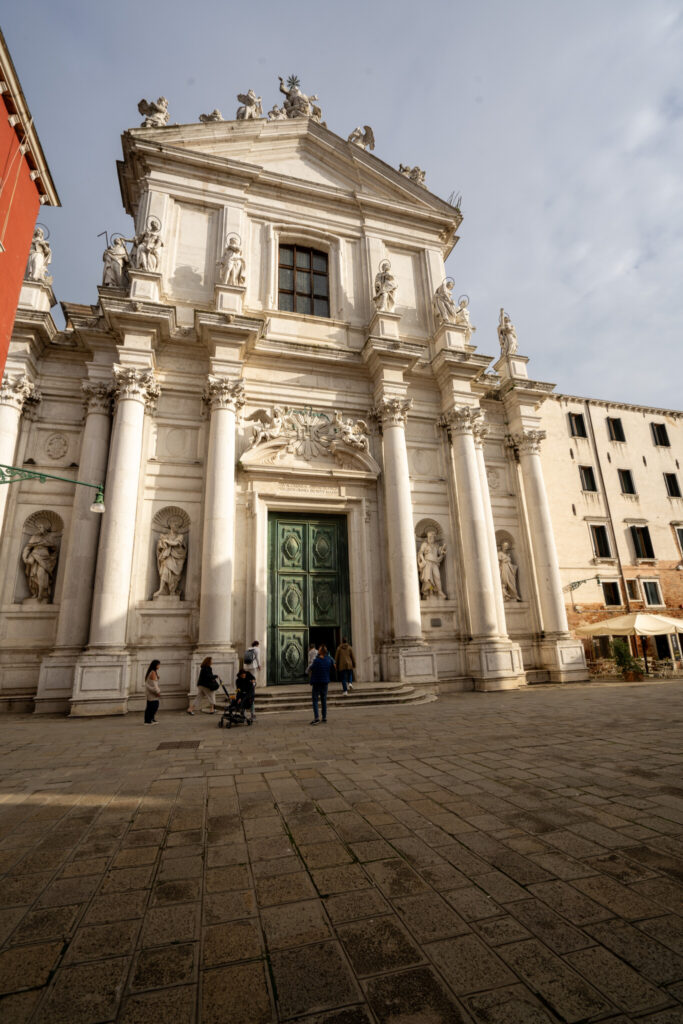
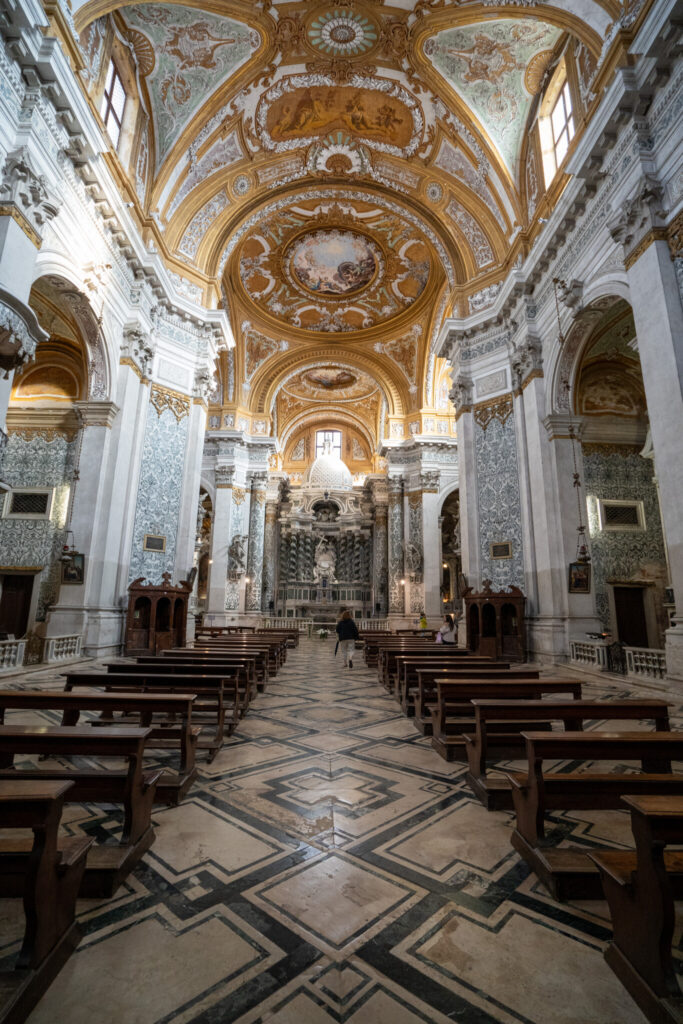
Marvel at a baroque masterpiece
At first glance, the white façade appears rather modest. Eight tall stone columns stand symmetrically around the doorway. Statues of the apostles occupy the niches and the first level, while at the top, a triangular pediment features a marble statue depicting ‘The Assumption of the Virgin Mary’. Everything is carved from pale Istrian limestone.
The Gesuiti church can not only admired from the quiet square, but is also clearly visible from the Venetian lagoon. Its position near Fondamenta Nuove makes it a prominent landmark for those arriving by boat, showcasing its statues and detailed stone carvings, beautifully contrasting with Venice’s skyline.
Please note that at the moment of publication, part of the church is covered in scaffolding for restoration works, but you can still visit and admire the interior.
Step into a dazzling interior
When you push open the heavy wooden doors, the atmosphere changes dramatically. The cool brightness of the campo transforms into a gentle interior glow. Above, soft daylight filters through the dome, illuminating red and green marble inlays on the floor and gilded details along the walls. Your footsteps echo quietly, and you quickly realize the church is much larger inside than it appears from outside.
The first striking element inside is the floor, where squares of pale marble framed by dark inlays form an intricate diamond pattern guiding your gaze down the central aisle. Along the walls, green and white marble panels are carved into ornate floral motifs, reminiscent of the luxurious fabrics once traded in Venice.
Looking upwards, you’ll see the barrel vault painted in delicate shades of gray, green, and gold. Daylight flickers across the ceiling, accentuating the stucco bands twisting around each painted panel. At the very center, a fresco depicts angels and saints surrounding the luminous ‘IHS’, a signature symbol of Jesuit churches.
About halfway down the nave on the left, a marble pulpit hangs above a dark wood confessional. Its canopy is impressively carved to resemble tasselled fabric from a single block of stone. Beneath it, the wooden niches of the confessional offer a quiet space for prayer.
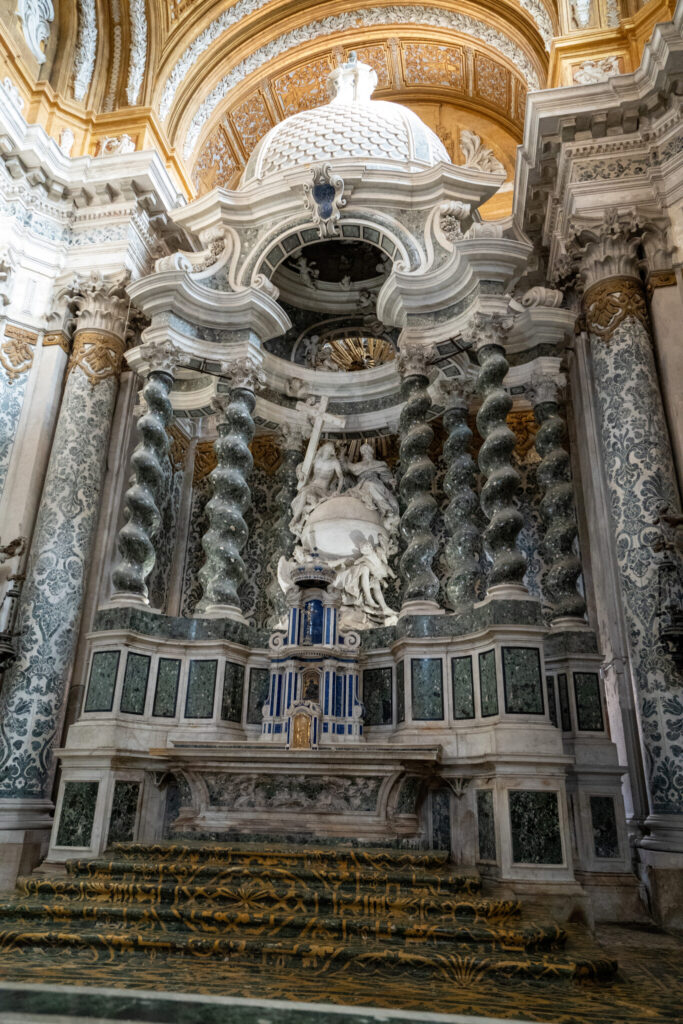
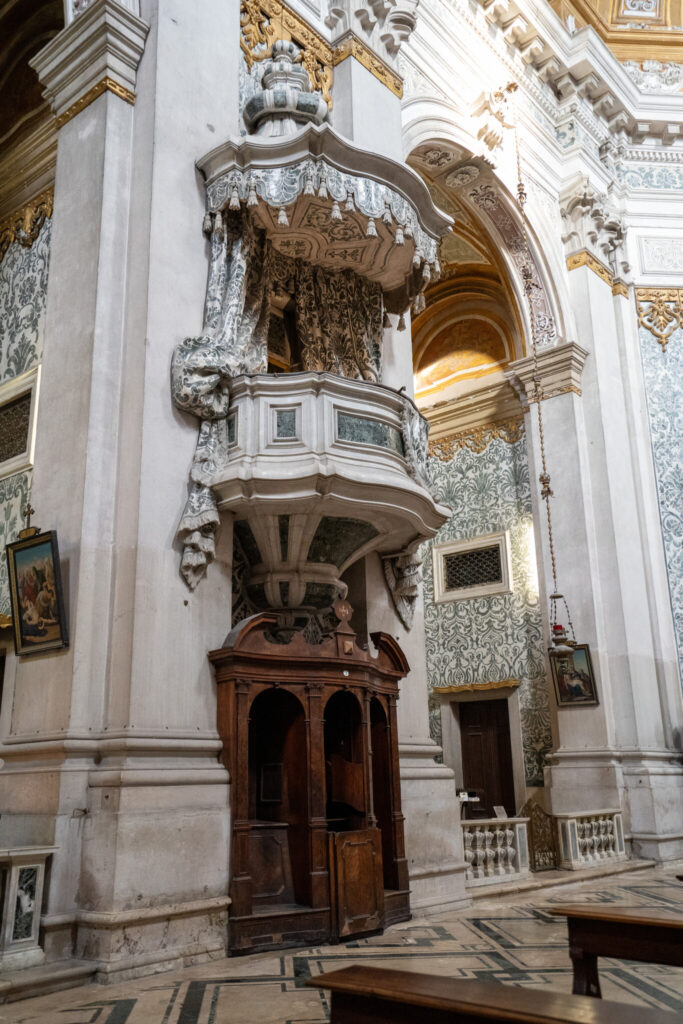
Admire impressive artworks
Walk down the wide central aisle to appreciate the grand high altar. Ten twisted green marble columns support a scalloped dome painted with angel musicians. Beneath them sits a small blue-and-gold tabernacle, while white marble statues depict the Holy Trinity. Designed by Giuseppe Pozzo, a Jesuit friar, the altar dates back to the 1720s.
Behind the altar is Tintoretto’s ‘Assumption of Mary’ from 1555, portraying Mary ascending to heaven. Originally from the old Crociferi high altar, this renaissance masterpiece harmonizes perfectly with its baroque surroundings in this magnificent church.
In the right transept, you’ll find the chapel of Saint Ignatius of Loyola, where the church’s only functioning organ is partially hidden behind a bronze grille. A tall statue of Saint Ignatius, founder of the Jesuits, holds the rules he established for his order. Opposite, the chapel dedicated to Saint Joseph features a painting of his final moments. Around the corner, Saint Francis Xavier presides over his own altar, flanked by the 1675 funerary monument to General Orazio Farnese.
In the wood-paneled sacristy, left of the choir, you can admire twenty canvases by Palma il Giovane, including works like ‘Elijah Fed by an Angel’, ‘David at Ahimelech’s Table’, and ‘The Gathering of the Manna’.
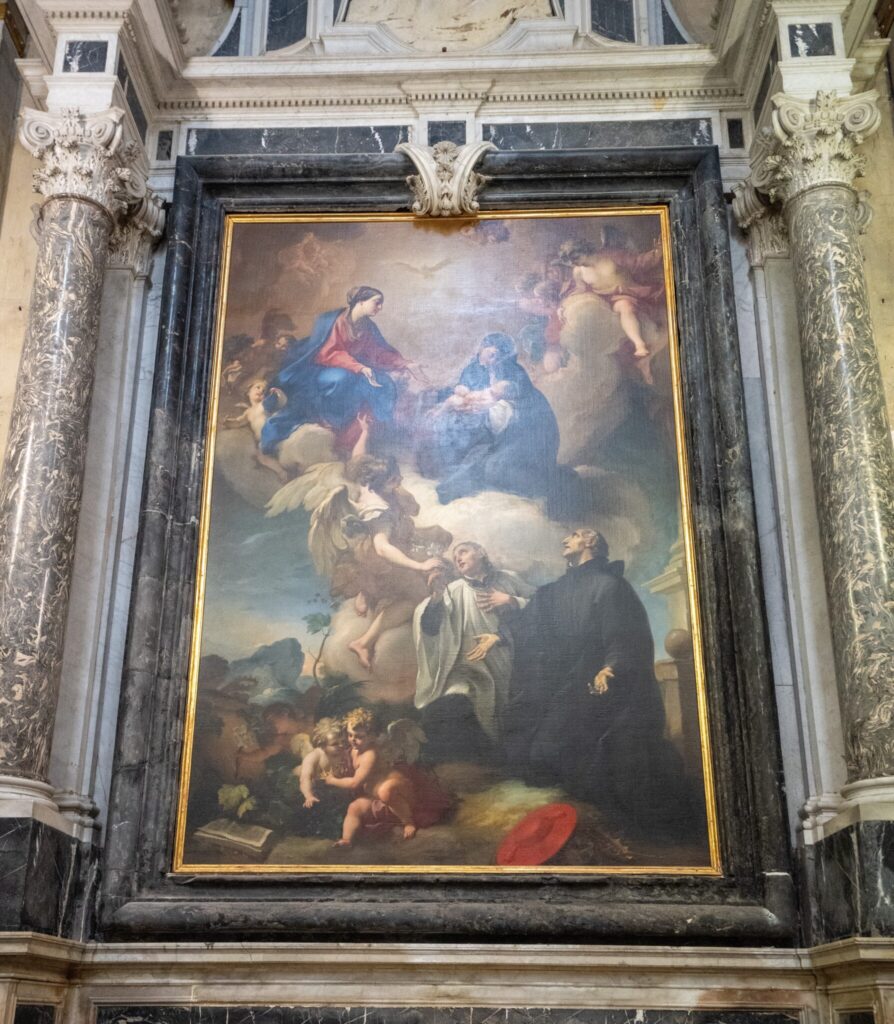
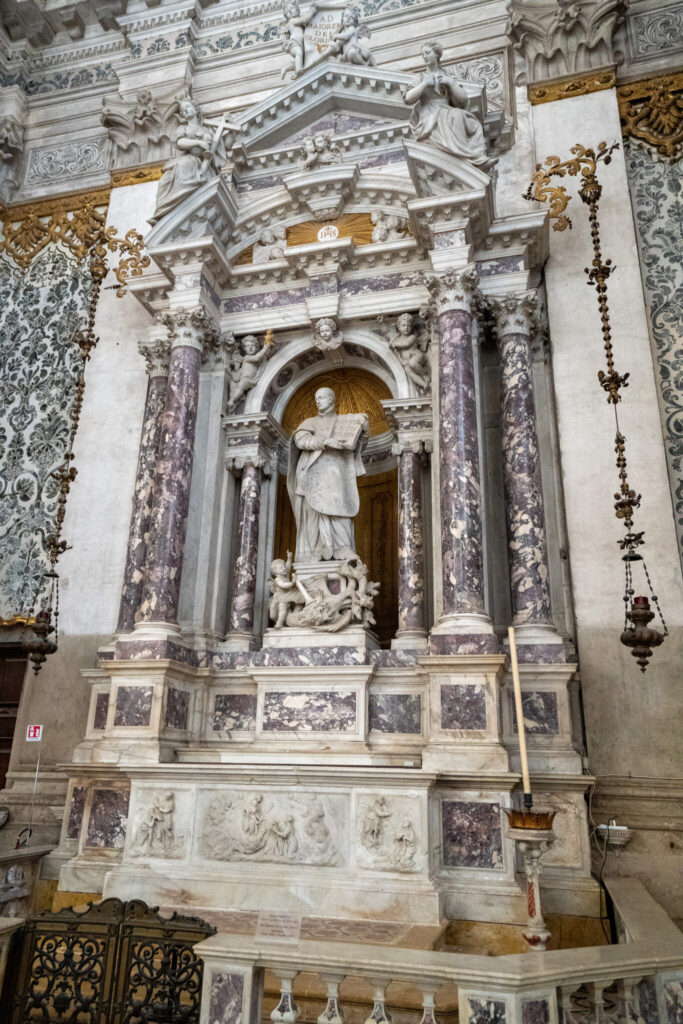
Visit without crowds
The Gesuiti church has no prominent signs or lengthy queues, allowing you to explore it at your own pace. It remains one of Venice’s off-the-beaten-path treasures, perfect for frequent visitors seeking tranquility.
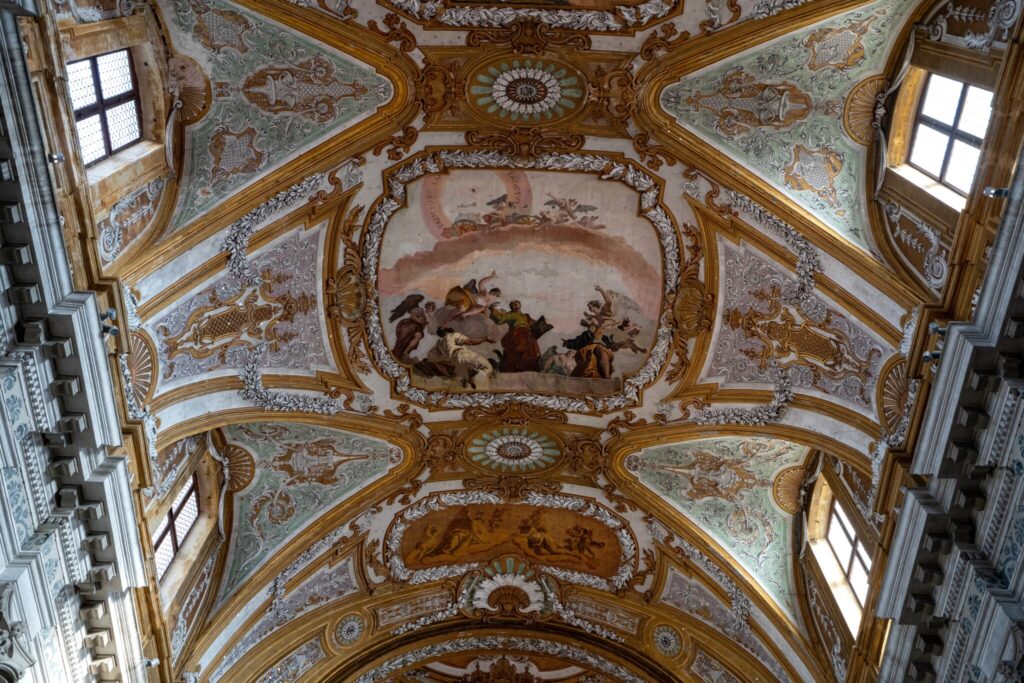
After your visit, consider enjoying a drink next door at Combo, located in the cloister of the former Convento dei Crociferi.
The Gesuiti church with its opulent façade and interior couldn’t be more different than San Pantalon with its very modest exterior. The latter however does have the largest canvast painting in the world and is also worth a visit. Learn more about it in ‘The masterpieces behind San Pantalon’s modest brick façade‘.
Enjoy your visit!
